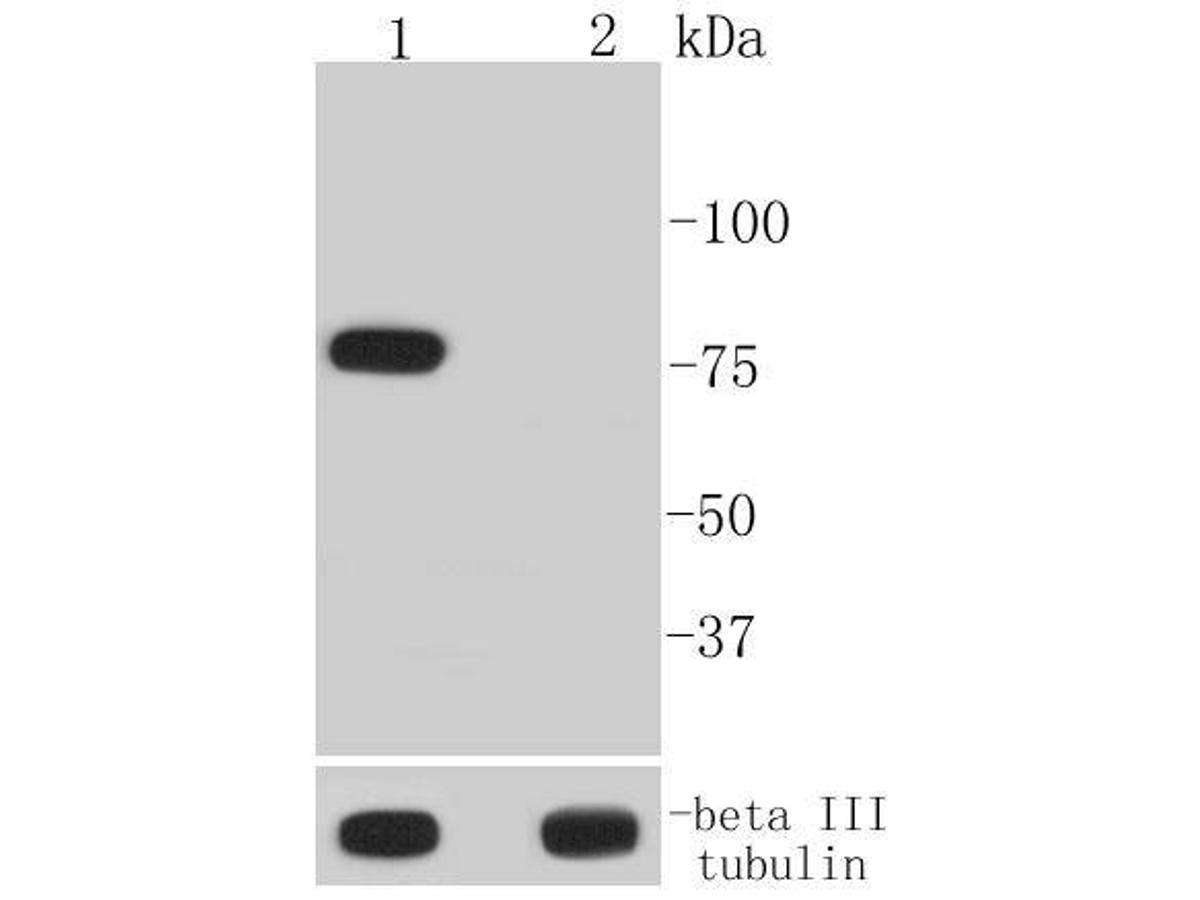Shopping Cart
Remove All Your shopping cart is currently empty
Your shopping cart is currently empty
Anti-Phospho-BTK (Tyr223) Antibody (3S713) is a Rabbit antibody targeting Phospho-BTK (Tyr223). Anti-Phospho-BTK (Tyr223) Antibody (3S713) can be used in ICC/IF,IF,IHC-Fr,IHC-P,WB.
| Pack Size | Price | USA Warehouse | Global Warehouse | Quantity |
|---|---|---|---|---|
| 50 μL | $271 | 7-10 days | 7-10 days | |
| 100 μL | $489 | 7-10 days | 7-10 days |
| Description | Anti-Phospho-BTK (Tyr223) Antibody (3S713) is a Rabbit antibody targeting Phospho-BTK (Tyr223). Anti-Phospho-BTK (Tyr223) Antibody (3S713) can be used in ICC/IF,IF,IHC-Fr,IHC-P,WB. |
| Synonyms | p-BTK (Y223), p-BTK (Tyr223), BTK (p-Y223), BTK (p-Tyr223) |
| Ig Type | IgG |
| Clone | 3S713 |
| Reactivity | Human (predicted:Mouse,Rat) |
| Verified Activity | Western blot analysis of Phospho-BTk (Y223) on different lysates using anti-Phospho-BTk (Y223) antibody at 1/1,000 dilution. Positive control: Lane 1: K562 cells treated with pervanadate Lane 2: Untreated K562 cell lysate  |
| Application | |
| Recommended Dose | WB: 1:1000-2000; IHC-P: 1:100-500; IHC-Fr: 1:50-200; ICC/IF: 1:50-200; IF: 1:50-200 |
| Antibody Type | Monoclonal |
| Host Species | Rabbit |
| Subcellular Localization | Cytoplasm. Cell membrane; Peripheral membrane protein. Nucleus. Note=In steady state, BTK is predominantly cytosolic. Following B-cell receptor (BCR) engagement by antigen, translocates to the plasma membrane through its PH domain. Plasma membrane localization is a critical step in the activation of BTK. A fraction of BTK also shuttles between the nucleus and the cytoplasm, and nuclear export is mediated by the nuclear export receptor CRM1. |
| Tissue Specificity | Predominantly expressed in B lymphocytes. |
| Construction | Recombinant Antibody |
| Purification | Protein A purified |
| Appearance | Liquid |
| Formulation | 0.01M TBS (pH7.4) with 1% BSA, 0.02% Proclin300 and 50% Glycerol. |
| Concentration | 1 mg/mL |
| Immunogen | KLH conjugated Synthesised phosphopeptide: human Btk around the phosphorylation site of Tyr223 |
| Antigen Species | Human |
| Gene Name | BTK |
| Gene ID | |
| Protein Name | Tyrosine-protein kinase BTK |
| Uniprot ID | |
| Biology Area | TLR Signaling,Tyrosine Kinases |
| Function | Non-receptor tyrosine kinase indispensable for B lymphocyte development, differentiation and signaling. Binding of antigen to the B-cell antigen receptor (BCR) triggers signaling that ultimately leads to B-cell activation. After BCR engagement and activation at the plasma membrane, phosphorylates PLCG2 at several sites, igniting the downstream signaling pathway through calcium mobilization, followed by activation of the protein kinase C (PKC) family members. PLCG2 phosphorylation is performed in close cooperation with the adapter protein B-cell linker protein BLNK. BTK acts as a platform to bring together a diverse array of signaling proteins and is implicated in cytokine receptor signaling pathways. Plays an important role in the function of immune cells of innate as well as adaptive immunity, as a component of the Toll-like receptors (TLR) pathway. The TLR pathway acts as a primary surveillance system for the detection of pathogens and are crucial to the activation of host defense. Especially, is a critical molecule in regulating TLR9 activation in splenic B-cells. Within the TLR pathway, induces tyrosine phosphorylation of TIRAP which leads to TIRAP degradation. BTK plays also a critical role in transcription regulation. Induces the activity of NF-kappa-B, which is involved in regulating the expression of hundreds of genes. BTK is involved on the signaling pathway linking TLR8 and TLR9 to NF-kappa-B. Transiently phosphorylates transcription factor GTF2I on tyrosine residues in response to BCR. GTF2I then translocates to the nucleus to bind regulatory enhancer elements to modulate gene expression. ARID3A and NFAT are other transcriptional target of BTK. BTK is required for the formation of functional ARID3A DNA-binding complexes. There is however no evidence that BTK itself binds directly to DNA. BTK has a dual role in the regulation of apoptosis. |
| Molecular Weight | Theoretical: 76 kDa. |
| Stability & Storage | Store at -20°C or -80°C for 12 months. Avoid repeated freeze-thaw cycles. |
| Transport | Shipping with blue ice. |
| Size | Quantity | Unit Price | Amount | Operation |
|---|

Copyright © 2015-2025 TargetMol Chemicals Inc. All Rights Reserved.